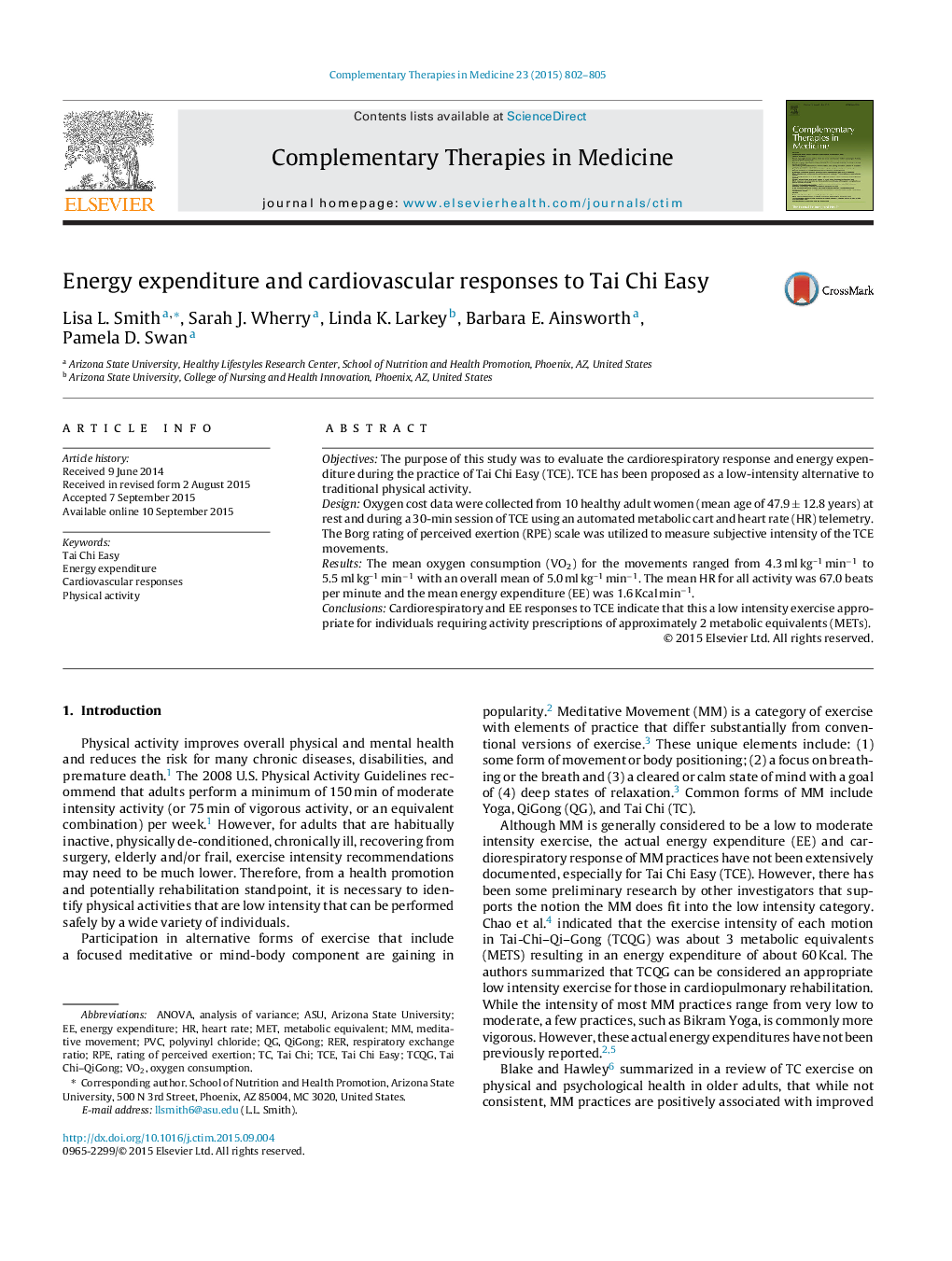| Article ID | Journal | Published Year | Pages | File Type |
|---|---|---|---|---|
| 5865507 | Complementary Therapies in Medicine | 2015 | 4 Pages |
â¢Cardiorespiratory and EE responses to Tai Chi Easy indicate that this a low intensity exercise.â¢Tai Chi Easy has been proposed as a low-intensity alternative to traditional physical activity.â¢Some MM has been shown to produce health and wellness benefits similar to other low and moderate intensity exercise modalities, such as walking.
ObjectivesThe purpose of this study was to evaluate the cardiorespiratory response and energy expenditure during the practice of Tai Chi Easy (TCE). TCE has been proposed as a low-intensity alternative to traditional physical activity.DesignOxygen cost data were collected from 10 healthy adult women (mean age of 47.9 ± 12.8 years) at rest and during a 30-min session of TCE using an automated metabolic cart and heart rate (HR) telemetry. The Borg rating of perceived exertion (RPE) scale was utilized to measure subjective intensity of the TCE movements.ResultsThe mean oxygen consumption (VO2) for the movements ranged from 4.3 ml kg-1 minâ1 to 5.5 ml kg-1 minâ1 with an overall mean of 5.0 ml kg-1 minâ1. The mean HR for all activity was 67.0 beats per minute and the mean energy expenditure (EE) was 1.6 Kcal minâ1.ConclusionsCardiorespiratory and EE responses to TCE indicate that this a low intensity exercise appropriate for individuals requiring activity prescriptions of approximately 2 metabolic equivalents (METs).
